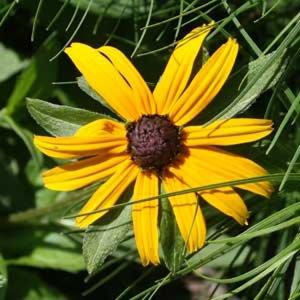Plant Spotlight: Black- Eyed Susan
go.ncsu.edu/readext?883960
en Español / em Português
El inglés es el idioma de control de esta página. En la medida en que haya algún conflicto entre la traducción al inglés y la traducción, el inglés prevalece.
Al hacer clic en el enlace de traducción se activa un servicio de traducción gratuito para convertir la página al español. Al igual que con cualquier traducción por Internet, la conversión no es sensible al contexto y puede que no traduzca el texto en su significado original. NC State Extension no garantiza la exactitud del texto traducido. Por favor, tenga en cuenta que algunas aplicaciones y/o servicios pueden no funcionar como se espera cuando se traducen.
Português
Inglês é o idioma de controle desta página. Na medida que haja algum conflito entre o texto original em Inglês e a tradução, o Inglês prevalece.
Ao clicar no link de tradução, um serviço gratuito de tradução será ativado para converter a página para o Português. Como em qualquer tradução pela internet, a conversão não é sensivel ao contexto e pode não ocorrer a tradução para o significado orginal. O serviço de Extensão da Carolina do Norte (NC State Extension) não garante a exatidão do texto traduzido. Por favor, observe que algumas funções ou serviços podem não funcionar como esperado após a tradução.
English
English is the controlling language of this page. To the extent there is any conflict between the English text and the translation, English controls.
Clicking on the translation link activates a free translation service to convert the page to Spanish. As with any Internet translation, the conversion is not context-sensitive and may not translate the text to its original meaning. NC State Extension does not guarantee the accuracy of the translated text. Please note that some applications and/or services may not function as expected when translated.
Collapse ▲Black-eyed Susan, Rudbeckia fulgida, is an herbaceous perennial that is a great plant to be added to your fall flower garden or pollinator garden. It will give it a wonderful yellow and basal green color that will last until autumn frosts. Even after the frost and the flowers have wilted away, the leaves will survive through the winter and give an appealing ground cover in your flower bed. Be sure to leave the seed heads for the birds and remove the floral stem from the plant to introduce new growth of leaves for a dense ground cover.
Rudbeckia is a fairly easy plant to grow. Soil conditions should not be soggy but well drained. It is recommended that you take soil samples before planting flower beds for optimal growth. This plant is full sun but can withstand partial shade. The size of this plant can range from 2-3 feet in height and 1-2 feet in width. A foot to three feet should be the space between plants depending on the area in which you are planting. This plant is resistance to dry soil and drought. Propagation can be done by division in the spring or fall or you can propagate it by seed.
This is a clumping plant so the roots grow underground as rhizomes. This is why the best way to propagate this plant is by dividing the roots. The growth form of this plant makes it suitable for planting in areas such as perennial beds, backgrounds, pollinator gardens, naturalized areas or forest gardens, and borders. If you have bees or a large population of pollinators, this is the perfect plant to have on your property as a source of food.
For additional information please visit the N.C. Cooperative Extension Gardener Plant Toolbox or call N.C. Cooperative Extension – Bladen County Center.






